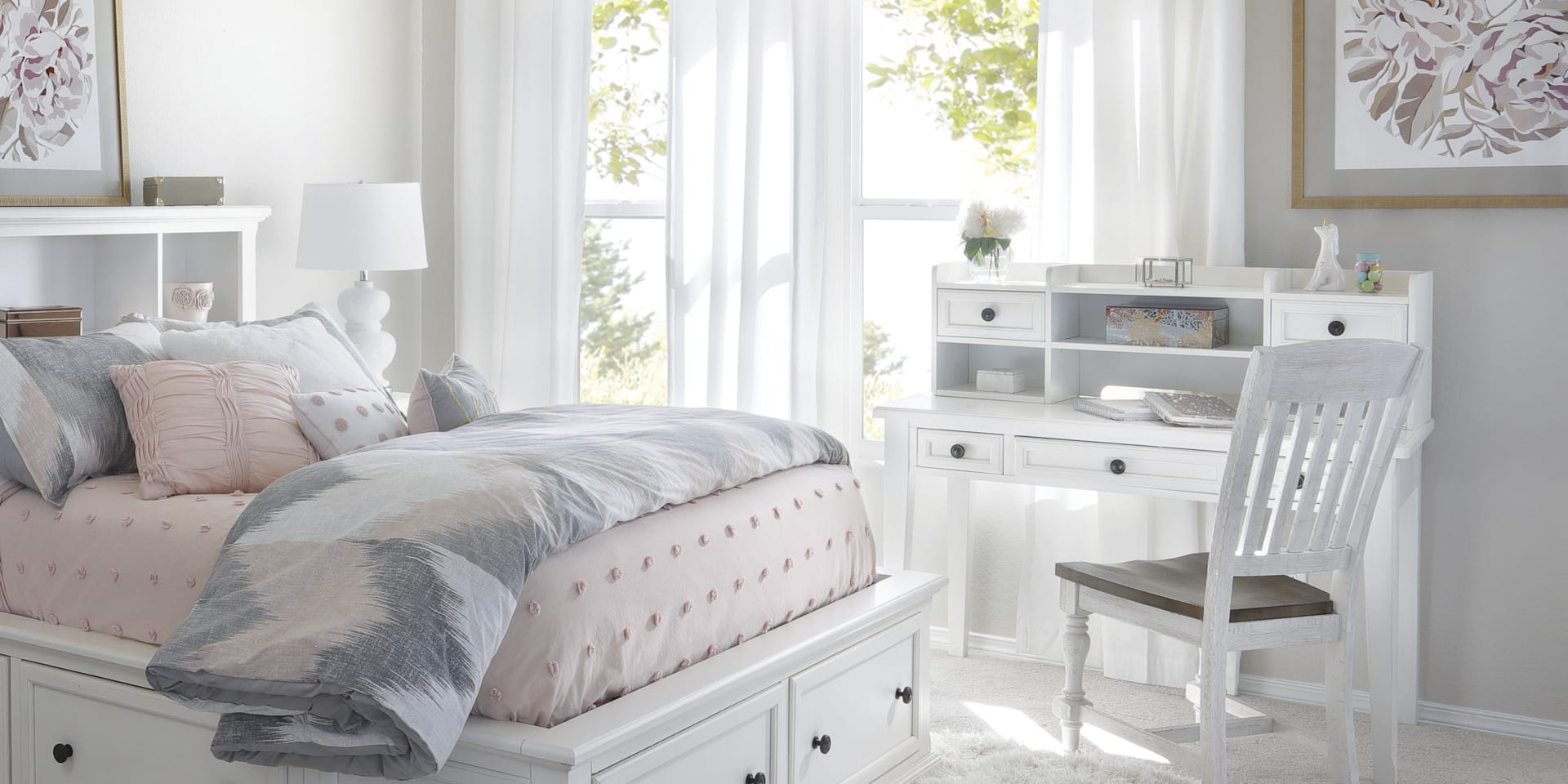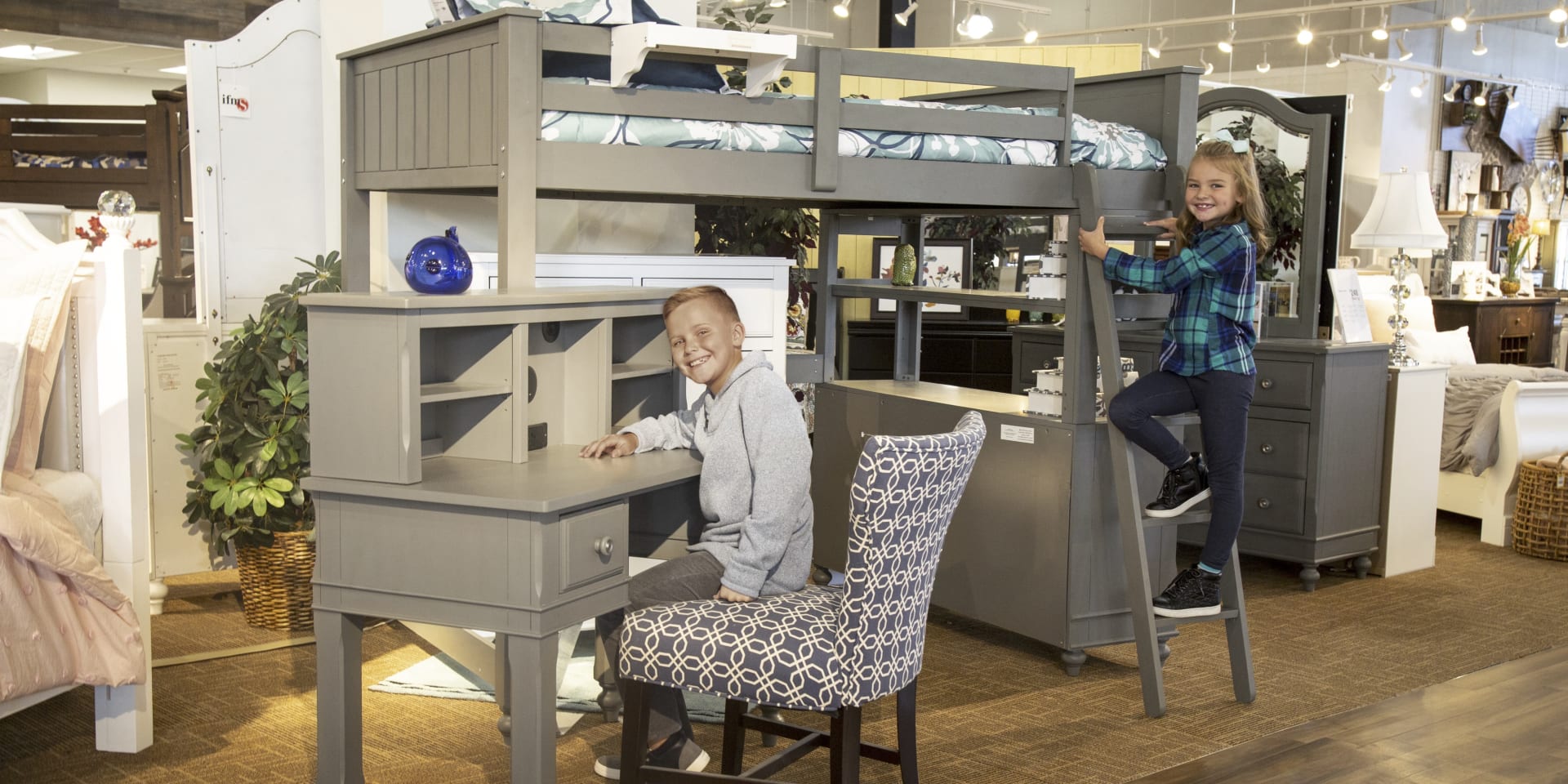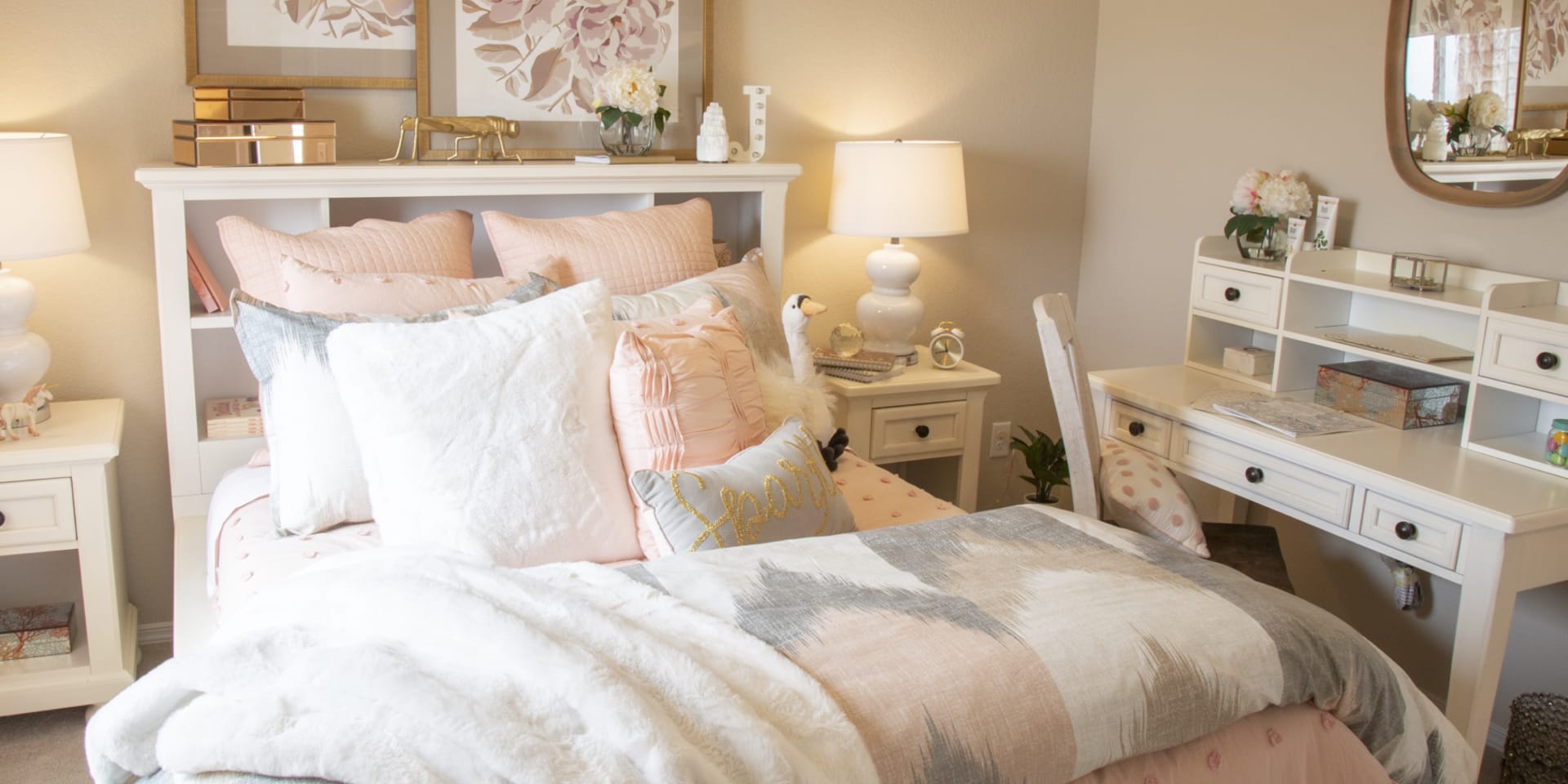4 Easy Steps to Create a Homework Space They’ll Love
As summer winds down and back-to-school season approaches, many parents look for ways to get their kids excited about learning again. A dedicated homework space can make all the difference! Kids are more engaged when they have a special area for assignments or reading. Here’s how to create a functional and fun homework station in just four easy steps.
1. Designate a Quiet Space

Start by choosing a quiet, distraction-free area in your child’s room (or elsewhere in the home). Involve your child in selecting the spot—they’ll be more likely to use it if they help create it.
- Tip: Lofted beds with built-in desks are a great option for maximizing space. Check out Furniture Row’s selection of kids' beds to find one that fits your needs.
- If you’re not buying new furniture, rearrange existing pieces to carve out a cozy nook for focus and creativity.
Make sure the space is uncluttered and has enough room for a desk, chair, and any necessary supplies. Use painter’s tape to outline the area and ensure it feels inviting rather than cramped.

2. Keep supplies within reach

A well-stocked desk is essential for productivity. Review your child’s school supply list and add any extras they might need, like pencil sharpeners or desktop organizers.
- Choose a desk with ample surface area and storage. If you’re shopping for one, Furniture Row offers desks with built-in drawers and shelves for easy organization.
- Add accessories like bookcases or bins to store larger items, ensuring everything is accessible but tidy.
Before finalizing the setup, double-check that the desk fits comfortably in the designated space without overcrowding it.
3. Make it fun and comfortable

A welcoming workspace encourages kids to use it! Focus on comfort, color, and lighting:
- Seating: Pick a chair that’s supportive yet comfortable—neither too rigid nor overly cushioned.
- Decor: Let your child choose vibrant colors or fun artwork that reflects their personality without becoming distracting.
- Lighting: A bright lamp can transform the area into an inviting study zone. Browse Furniture Row’s lighting options for stylish solutions.
Avoid clutter by limiting decor items to a few meaningful pieces. If possible, keep screens out of this space unless required for schoolwork.
4. Establish a Routine

Even the best homework space won’t be used without consistency. Work with your child to set a routine:
- Determine how often they’ll use the space based on their workload.
- Pick a time of day that fits their schedule—whether it’s right after school or after dinner.
- Encourage them until it becomes a habit.
With their new workspace ready, you’ll see them become more confident and engaged in their learning.
Creating a homework station doesn’t have to be overwhelming or expensive. By following these simple steps—and exploring Furniture Row’s wide range of desks, chairs, and accessories—you can set your child up for success this school year.